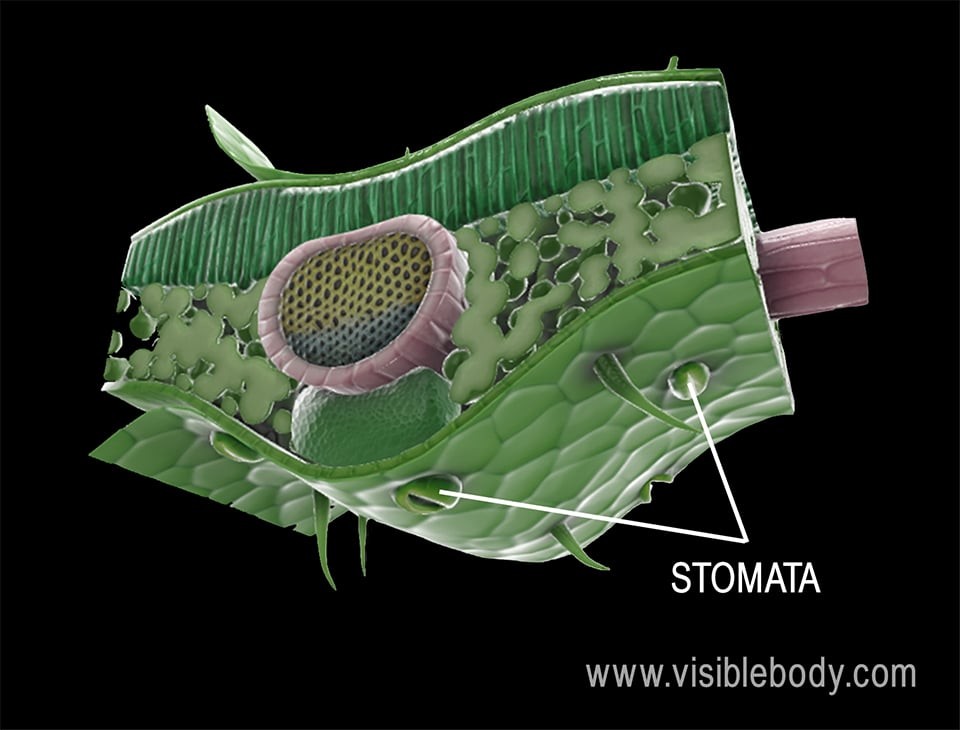Plants, like all living organisms, require energy to fuel their life processes. They obtain this energy from food. While humans and many animals are heterotrophs, relying on consuming other organisms for sustenance, plants are autotrophs, uniquely capable of producing their own food. This remarkable process is known as photosynthesis.
Photosynthesis is the ingenious method plants employ to convert light energy into chemical energy. Using sunlight, plants transform water and carbon dioxide into glucose (a sugar) and oxygen. This biological process is elegantly summarized by a chemical equation.
Chemical equations are a standard way to represent chemical reactions. They list the starting molecules, known as reactants, on the left side and the resulting molecules, called products, on the right, separated by an arrow indicating the direction of the reaction.
[Reactants] → [Products]
Think of reactants as the ingredients you need for a recipe, and products as the delicious dishes you create.
Now, let’s delve into the chemical equation that describes photosynthesis:
Sunlight + 6 CO2 + 6 H2O → C6H12O6 + 6 O2
Where:
CO2 = carbon dioxide
H2O = water
C6H12O6 = glucose
O2 = oxygenNote: You might sometimes see “sunlight” or a sun symbol written above the arrow in the equation to explicitly indicate its role.
This equation reveals that to synthesize a single molecule of glucose and six molecules of oxygen, a plant requires six molecules of carbon dioxide and six molecules of water. Therefore, the fundamental reactants of photosynthesis are carbon dioxide and water.
The Essential Ingredients: Carbon Dioxide and Water in Photosynthesis
We’ve established that carbon dioxide (CO2) and water (H2O) are indispensable for plants to produce their nourishment through photosynthesis. But where do plants source these vital reactants, and how are they transported to the sites of photosynthetic activity within the plant?
Plants acquire carbon dioxide from the atmosphere through tiny pores on their leaves called stomata. These microscopic openings act as gateways for gas exchange. Some plants, particularly monocots, have stomata on both the upper and lower surfaces of their leaves. Others, like dicots and certain monocots, primarily have stomata on the underside, or lower epidermis, of their leaves.
Water, the other crucial reactant, is absorbed from the soil surrounding the plant’s roots. From the roots, water embarks on a journey to the leaves, traveling through the xylem, a key component of the plant’s vascular system. Within the leaves, the xylem, along with the phloem (which transports sugars), are bundled together in vascular bundles, forming a network for nutrient and water transport.
Once carbon dioxide and water arrive within the leaf, they diffuse into the mesophyll cells. These cells form the ground tissue layer nestled between the upper and lower epidermis of the leaf. Inside the mesophyll cells reside chloroplasts, specialized organelles that are the powerhouses of photosynthesis. It is within these chloroplasts that carbon dioxide and water are utilized to execute the intricate process of photosynthesis.
Harnessing Light Energy: The Role of Chloroplasts
Plant cells contain unique organelles called chloroplasts, which are specifically designed to host the reactions of photosynthesis. Within chloroplasts, thylakoid membranes house chlorophyll, a green pigment. Chlorophyll’s crucial function is to capture photons, packets of light energy, from the sun. This captured light energy initiates the light-dependent reactions, the first phase of photosynthesis, which occur within the thylakoid membranes.
During the light-dependent reactions, water molecules (H2O) are split. This process releases electrons and hydrogen ions that are essential for subsequent stages of photosynthesis. Energy-carrying molecules, ATP and NADPH, are also generated during these reactions. These molecules act as energy currency and reducing power, respectively, driving the next phase of photosynthesis – the light-independent reactions. Specifically, electrons and hydrogen ions from water are used to build NADPH, while hydrogen ions also contribute to the conversion of ADP to ATP.
Glucose and Oxygen: The Products of Photosynthesis
Interestingly, oxygen, a gas vital for many life forms including humans, is actually a byproduct of photosynthesis. While the hydrogen atoms from water molecules are utilized in the photosynthetic reactions to create glucose, the oxygen atoms are released as oxygen gas (O2). This oxygen diffuses out of the leaves through the stomata, enriching the atmosphere and supporting respiration in plants and other organisms.
The light-independent reactions, also known as the Calvin cycle, represent the second phase of photosynthesis. These reactions take place in the stroma, the fluid-filled space within chloroplasts. Enzymes in the stroma, along with the energy-carrying molecules (ATP and NADPH) generated during the light-dependent reactions, work to convert carbon dioxide molecules (CO2) into glucose. Essentially, carbon dioxide is broken down and rearranged to form glucose, a sugar that serves as the plant’s primary source of food.
The glucose produced in photosynthesis is then utilized by the plant’s mitochondria in a process called cellular respiration. Mitochondria break down glucose to release energy in a usable form (ATP), which powers all the plant’s cellular activities, from growth to reproduction.
Following the light-independent reactions, glucose is often converted into larger carbohydrates, such as sucrose (table sugar), starch (for storage), or cellulose (for structural support). These sugars are then transported throughout the plant via the phloem, reaching roots for storage or other plant parts where they are used as fuel for growth and other metabolic processes.
